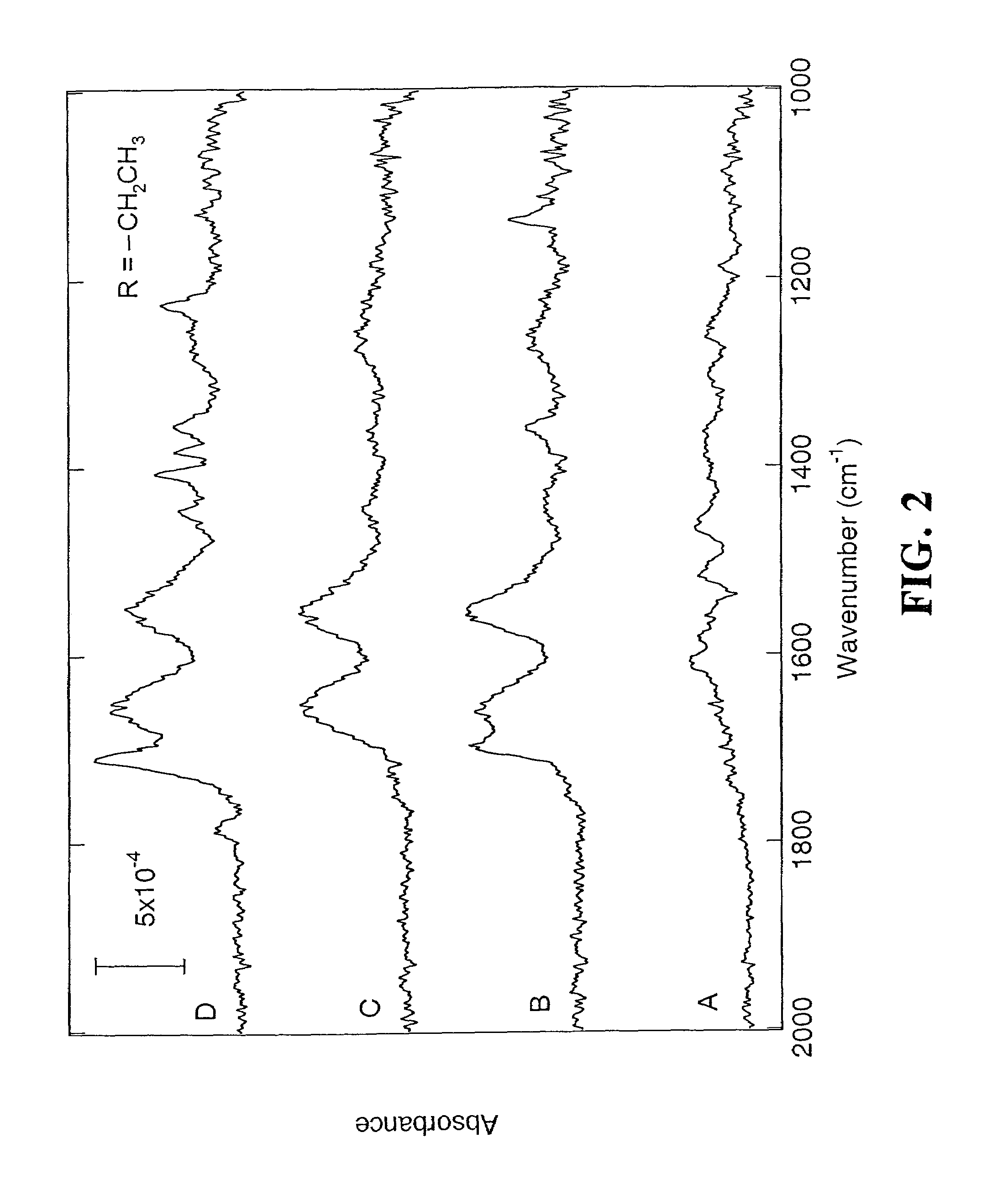Fusion protein arrays on metal substrates for surface plasmon resonance imaging
a technology of surface plasmon and protein array, which is applied in the field of surface plasmon resonance imaging with protein array on metal substrate, can solve the problems of inability to image the “biacore” instrument, the inability to develop new tools to elucidate protein-protein or protein-dna interactions, and the inability to understand the biological significance of most sequence data. , to achieve the effect of rapid and efficient method
- Summary
- Abstract
- Description
- Claims
- Application Information
AI Technical Summary
Benefits of technology
Problems solved by technology
Method used
Image
Examples
examples
[0124]The following Examples are included solely to provide a more complete understanding of the present invention. The Examples do not limit the scope of the invention disclosed and claimed herein in any fashion.
Standard Procedures:
[0125]Gold substrates used in contact angle measurements were purchased commercially from Evaporated Metal Films (Ithaca, N.Y.) and those used in scanning or imaging SPR measurements were prepared by vapor deposition onto microscope slide covers that had been silanized with (3-mercaptopropyl)-trimethoxysilane (Aldrich, Milwaukee, Wis.) in a manner similar to that reported by Goss et al. (1991).
[0126]All oligonucleotides were synthesized on an ABI (Foster, Calif.) DNA synthesizer at the University of Wisconsin Biotechnology Center. Oligonucleotides included a 5′ thiol modifier C6, as well as a 15-T spacer prior to the DNA sequence of interest to provide additional spacing away from the gold surface. Glen Research's (Sterling, Va.) “5′-Thiol-Modifier C6” a...
PUM
| Property | Measurement | Unit |
|---|---|---|
| contact angle | aaaaa | aaaaa |
| volumes | aaaaa | aaaaa |
| contact angle | aaaaa | aaaaa |
Abstract
Description
Claims
Application Information
 Login to View More
Login to View More - R&D
- Intellectual Property
- Life Sciences
- Materials
- Tech Scout
- Unparalleled Data Quality
- Higher Quality Content
- 60% Fewer Hallucinations
Browse by: Latest US Patents, China's latest patents, Technical Efficacy Thesaurus, Application Domain, Technology Topic, Popular Technical Reports.
© 2025 PatSnap. All rights reserved.Legal|Privacy policy|Modern Slavery Act Transparency Statement|Sitemap|About US| Contact US: help@patsnap.com



